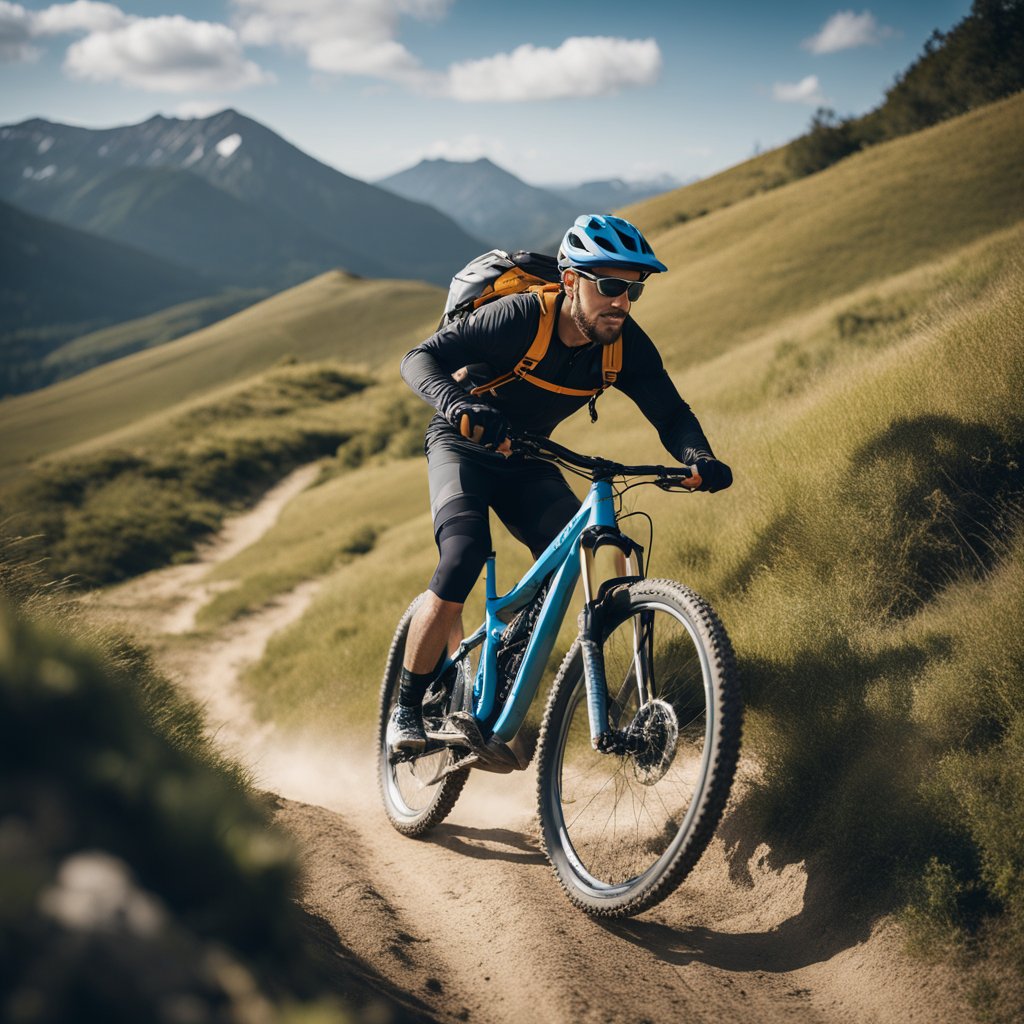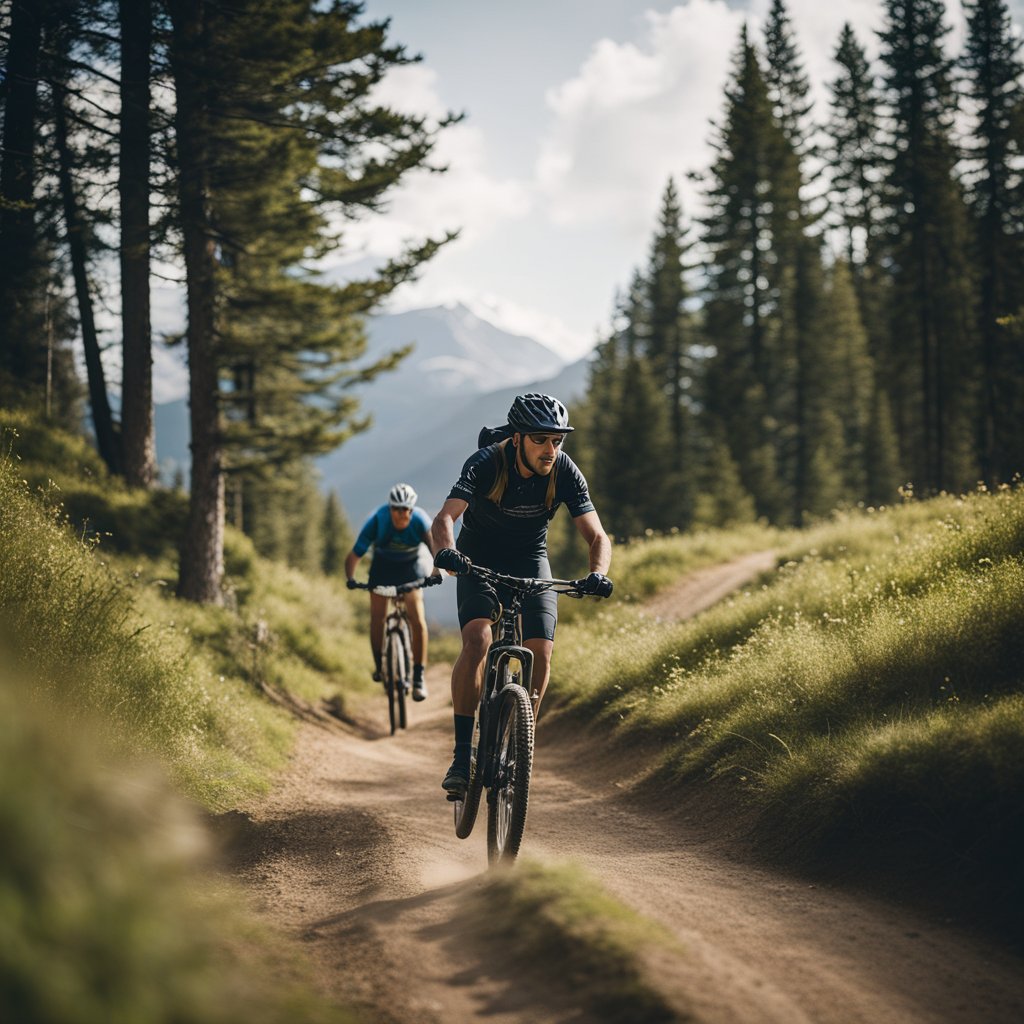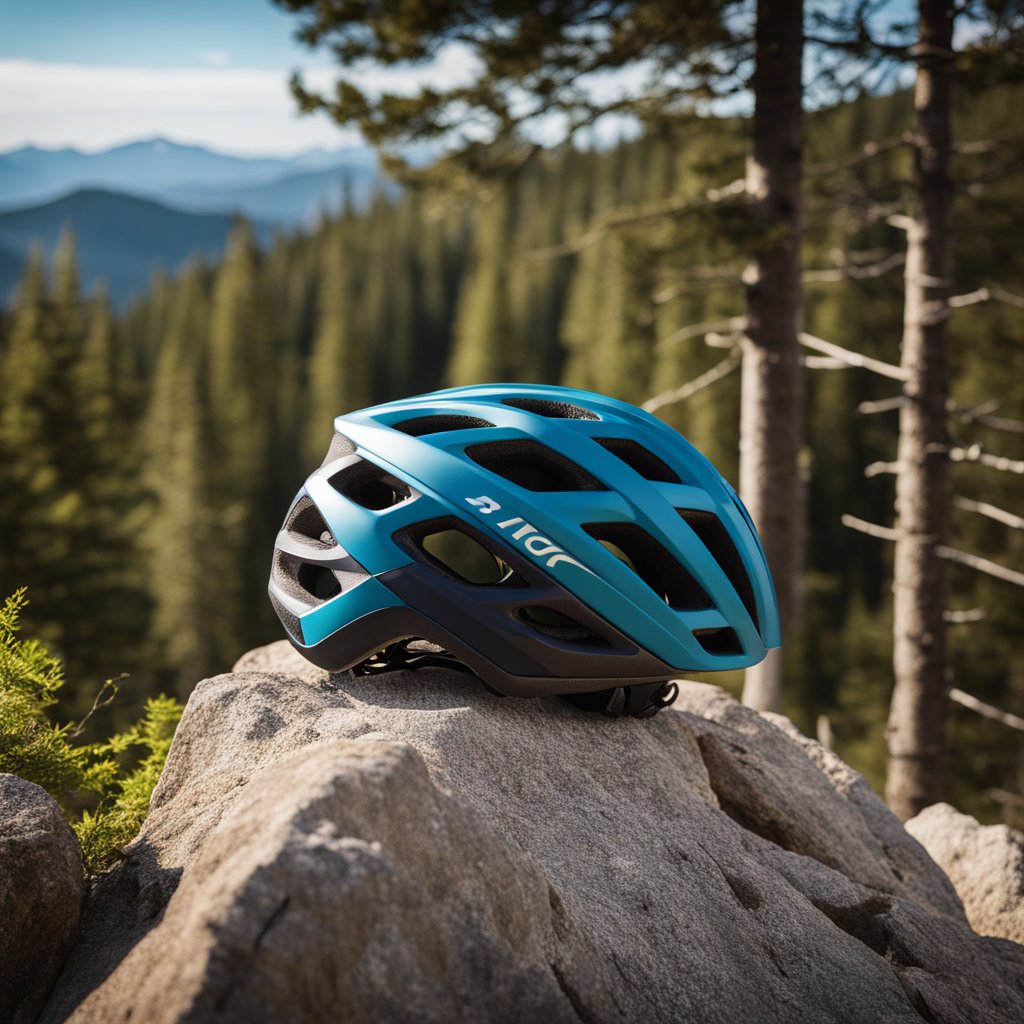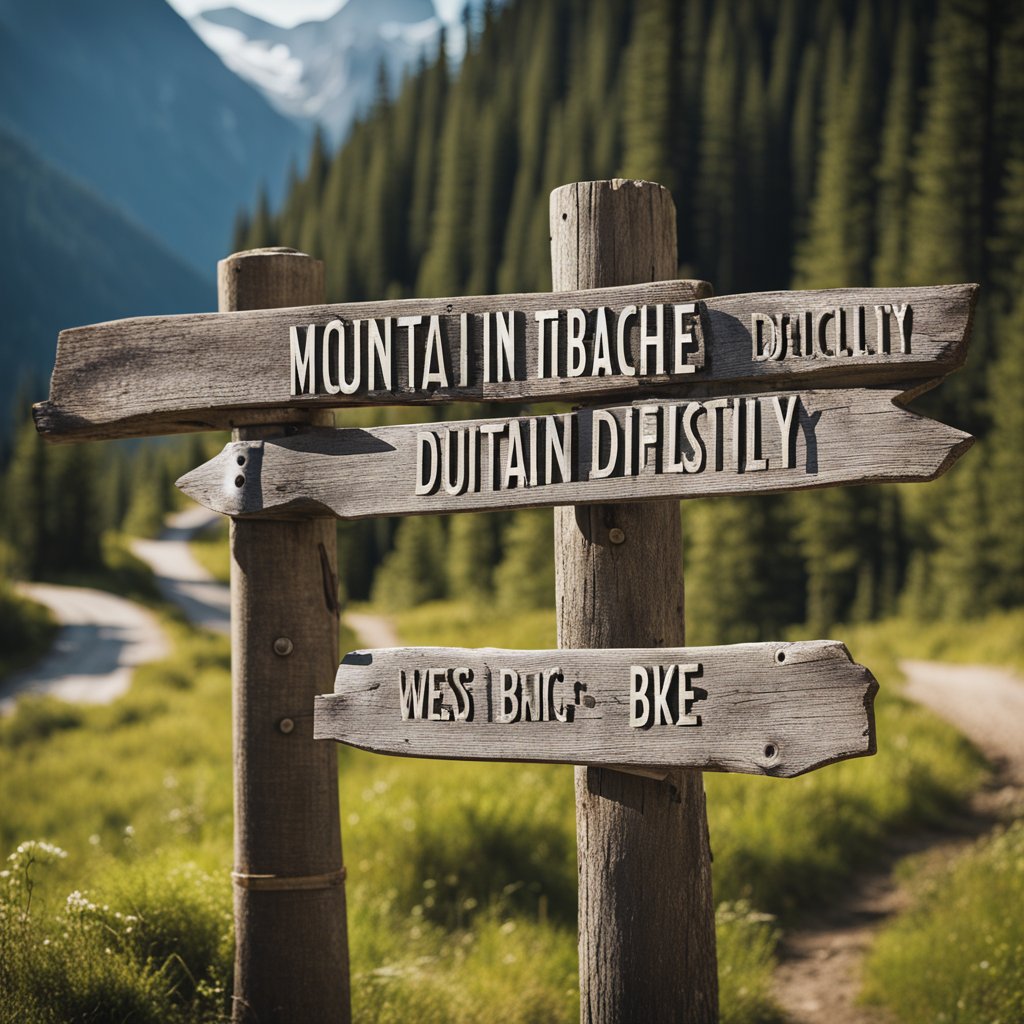Getting Started with Mountain Biking
If you’re new to mountain biking, it’s important to start with the basics. Here are some tips to help you get started:
Choosing the Right Bike and Gear
Before you hit the trails, you need to choose the right bike and gear. There are many different types of mountain bikes, so it’s important to choose one that’s suited to your skill level and the type of terrain you’ll be riding on. Some of the factors to consider when choosing a mountain bike include frame material, wheel size, suspension type, and gearing.
In addition to a bike, you’ll also need some basic gear to get started. This includes a helmet, gloves, and appropriate clothing. A good helmet is essential for protecting your head in case of a fall, while gloves can help improve your grip on the handlebars. You’ll also want to wear clothing that’s comfortable and breathable.
Understanding the Basics of Mountain Biking
Once you have your bike and gear, it’s time to start learning the basics of mountain biking. One of the most important skills to master is proper body position. This involves keeping your weight centered over the bike, with your arms and legs slightly bent to absorb bumps and shocks.
Another key skill is braking. You’ll need to learn how to use your brakes effectively to maintain control on steep descents and tight turns. It’s also important to learn how to shift gears properly, so you can maintain a comfortable cadence on different types of terrain.
As you practice and gain more experience, your confidence and skill level will improve. Remember to start with easier trails and gradually work your way up to more challenging terrain. With time and practice, you’ll be able to tackle even the toughest mountain biking trails with confidence.
Mastering Mountain Biking Skills
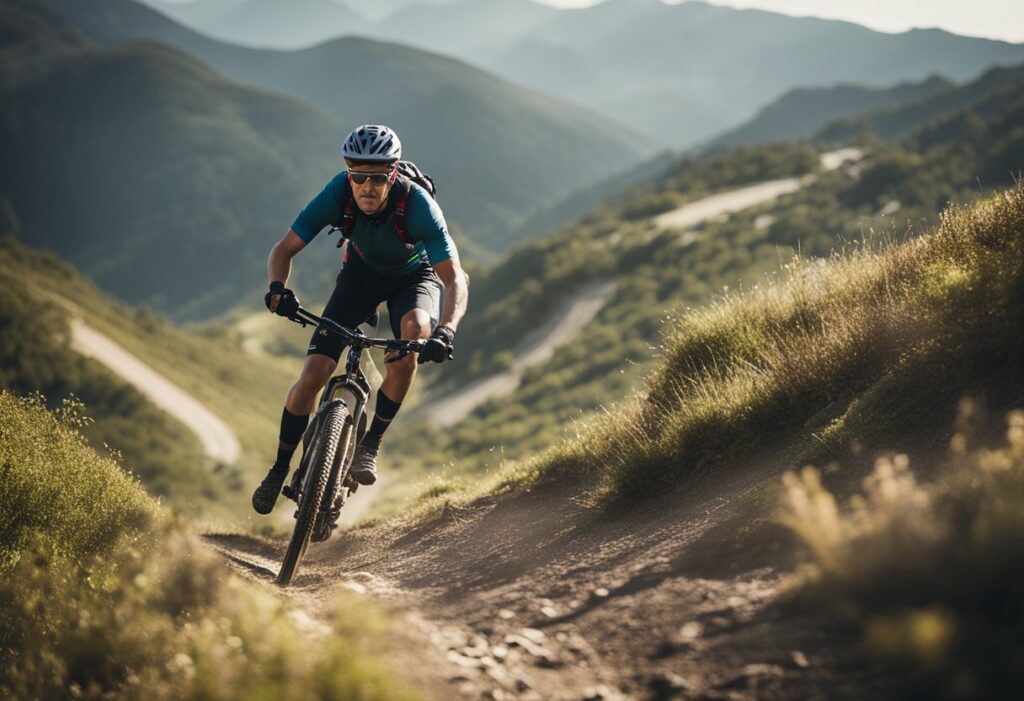
As a beginner mountain biker, mastering core riding techniques is crucial to help you overcome fear and build confidence on the trails. Here are some essential skills you need to develop to become a better rider.
Developing Core Riding Techniques
To ride safely and efficiently, you need to master the basic riding techniques, such as proper body position, braking, shifting gears, and maintaining a steady cadence. Riding with a proper body position, such as keeping your elbows bent and your weight centered over the bike, will help you maintain balance and control on the trails. Knowing how to brake effectively and shift gears smoothly will help you navigate different terrains and maintain a comfortable speed.
Enhancing Balance and Control
Balance and control are essential skills for any mountain biker. To enhance your balance, practice riding on different terrains, such as rocks and roots, and focus on keeping your body weight centered over the bike. To improve your control, practice riding at different speeds and focus on maintaining proper body position and using your brakes effectively.
Navigating Trails and Obstacles
Navigating trails and obstacles is an essential skill for any mountain biker. To ride safely and efficiently, you need to know how to read the trail and anticipate obstacles. Look ahead and plan your line before you reach an obstacle, such as a rock or a log. Use your body weight to lift the front wheel over the obstacle and maintain your momentum.
In conclusion, mastering mountain biking skills takes time and practice. By developing core riding techniques, enhancing balance and control, and navigating trails and obstacles, you can become a more confident and skilled rider. Remember to always ride within your limits and focus on continuous improvement.
Overcoming Mental Barriers
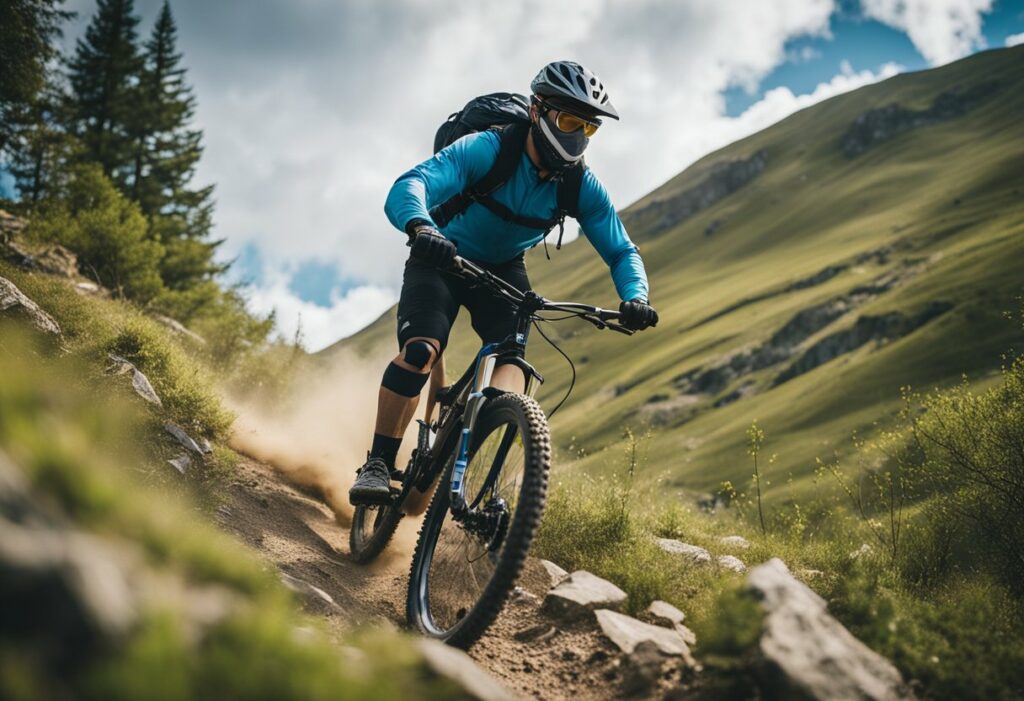
As a beginner mountain biker, it’s natural to feel anxious and nervous about tackling new trails and obstacles. However, these mental barriers can hold you back and prevent you from building the confidence and skills you need to become a better rider. In this section, we’ll explore some tips and techniques to help you overcome your mental barriers and build mental endurance.
Building Mental Endurance
Mountain biking requires both physical and mental endurance. While you can build physical endurance through training and practice, mental endurance is just as important. One way to build mental endurance is to gradually increase the difficulty of your rides. Start with easier trails and gradually work your way up to more challenging ones. This will help you build confidence and resilience, and prepare you for more difficult rides in the future.
Using Visualization and Positive Mindset
Visualization is a powerful tool that can help you overcome fear and build confidence. Before a ride, take some time to visualize yourself successfully navigating the trail or obstacle. Imagine yourself feeling confident, focused, and in control. This can help you stay calm and focused during the ride, and give you the confidence you need to tackle new challenges.
In addition to visualization, maintaining a positive mindset can also help you overcome mental barriers. Try to focus on the positive aspects of your ride, such as the beautiful scenery or the feeling of accomplishment when you complete a challenging section. Encourage yourself with positive self-talk, and don’t be too hard on yourself if you make mistakes. Remember, mountain biking should be fun and enjoyable, so try to relax and enjoy the ride.
By building mental endurance, using visualization and positive mindset, and focusing on the fun and enjoyment of the ride, you can overcome your mental barriers and build the confidence you need to become a better mountain biker. So smile, relax, and have fun!
Training and Practice Routines
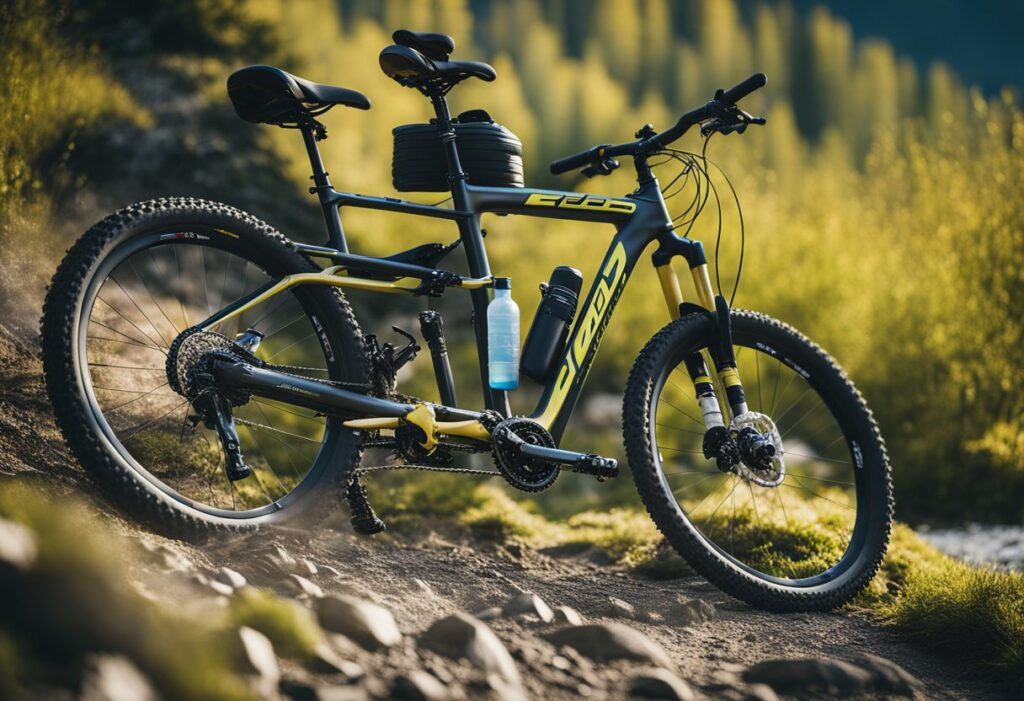
As a beginner mountain biker, one of the most important things you can do to overcome fear and build confidence is to establish a consistent training and practice routine. A structured practice plan will help you build endurance, stamina, leg strength, and physical fitness, while also improving your skills and technique.
Creating a Structured Practice Plan
To create a structured practice plan, start by setting goals for yourself. What do you want to achieve as a mountain biker? Do you want to complete a specific trail or race? Do you want to improve your technical skills? Once you have established your goals, break them down into smaller, achievable steps.
Next, create a schedule for your practice sessions. Aim to practice at least three times a week, and make sure to include both on-bike and off-bike exercises. On-bike exercises can include trail rides, hill repeats, and technical drills, while off-bike exercises can include interval training and stretching.
Incorporating Interval Training and Stretching
Interval training is a great way to improve your endurance and stamina. To incorporate interval training into your practice routine, try alternating between periods of high-intensity riding and periods of rest. For example, you might ride hard for 30 seconds, then rest for 30 seconds, and repeat this cycle for 10-15 minutes.
Stretching is also an important part of any practice routine. Stretching can help prevent injuries, improve flexibility, and reduce muscle soreness. Make sure to stretch before and after every ride, and include stretches that target your legs, hips, back, and shoulders.
By establishing a consistent training and practice routine that includes interval training and stretching, you can build endurance, stamina, leg strength, and physical fitness, while also improving your skills and technique as a mountain biker.
Joining the Mountain Biking Community
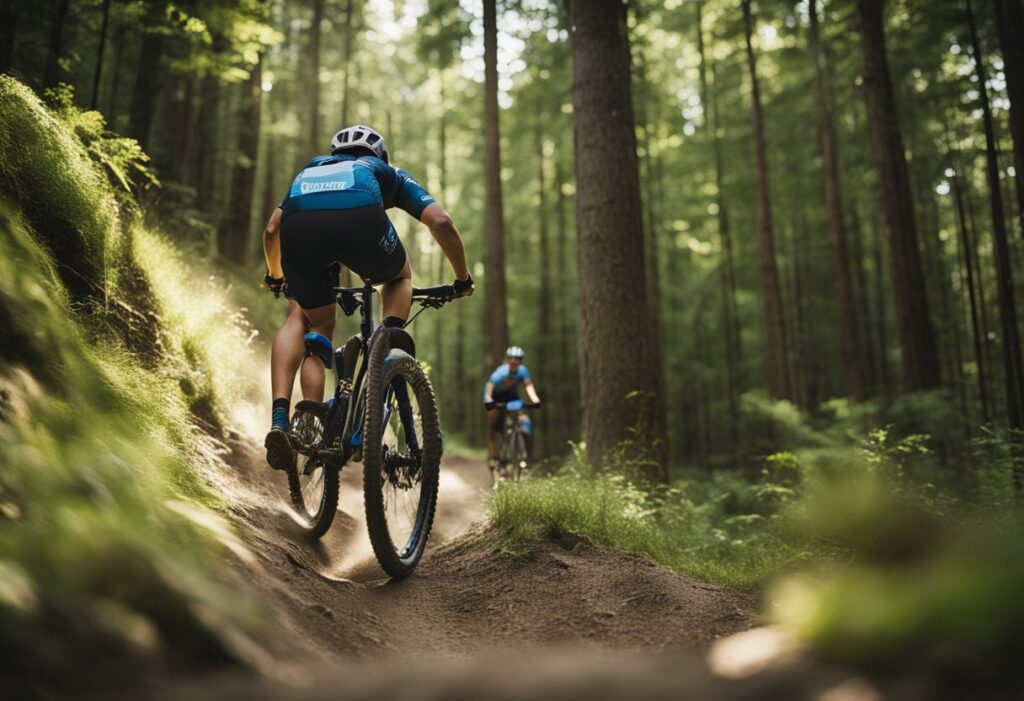
As a beginner mountain biker, joining the mountain biking community can be a great way to overcome fear and build confidence. Being part of a community can provide you with support, camaraderie, and opportunities to share experiences with other novice riders.
Finding Support and Sharing Experiences
One of the best things about the mountain biking community is the willingness of other riders to help out and share their experiences. Whether you’re struggling with a particular trail or just need some advice on gear, there’s always someone who can offer guidance. Joining a local mountain biking group or club is a great way to connect with other riders and find support. You can also find online communities and forums where you can ask questions, share your experiences, and connect with other riders.
Participating in Events and Races
Participating in events and races can be a great way to challenge yourself, build confidence, and meet other riders. There are events and races for all skill levels, from beginner-friendly races to more challenging ones. Racing can be a great way to push yourself and see how far you’ve come since you started mountain biking. Even if you don’t win, you’ll still have fun and learn a lot from the experience.
Joining the mountain biking community can be a great way to overcome fear and build confidence. You’ll find support, camaraderie, and opportunities to share experiences with other novice riders. Participating in events and races can be a great way to challenge yourself, build confidence, and meet other riders.
Frequently Asked Questions
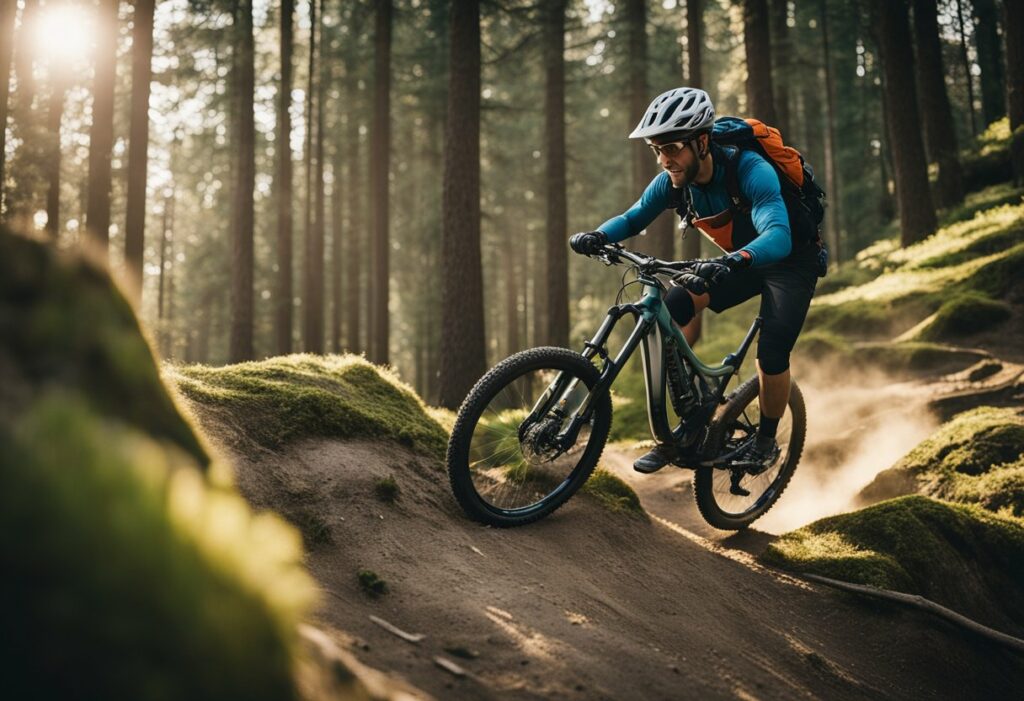
What are some effective techniques for building confidence when starting out with mountain biking?
As a beginner mountain biker, it’s essential to start with the basics. You can build your confidence by practicing on easy trails and gradually working your way up to more challenging terrain. It’s also important to learn proper techniques, such as body positioning and braking, to help you feel more in control of your bike. Take the time to practice your skills in a safe and controlled environment, such as a bike park or a local trail system.
How can a beginner approach overcoming the fear of difficult trails or jumps in mountain biking?
Fear is a natural response when facing challenging terrain or obstacles. However, with the right mindset and preparation, you can overcome it. Start by setting small goals and gradually working your way up to more challenging trails or jumps. Take the time to practice your skills and techniques, and don’t be afraid to ask for help or advice from more experienced riders. Remember, it’s okay to walk your bike or take a break if you feel overwhelmed.
What steps should I take to feel more secure when mountain biking after experiencing a fall or crash?
Falling or crashing is a common experience for mountain bikers, but it can also be a setback to your confidence. Take the time to assess your injuries and seek medical attention if necessary. Once you’re ready to get back on your bike, start slowly and build your confidence gradually. Practice your skills on easy trails and work your way up to more challenging terrain. It’s also important to wear proper safety gear, such as a helmet and gloves, to protect yourself in case of a fall.
Can you suggest ways to gradually face and conquer the fear of steep or technical descents?
Steep or technical descents can be intimidating, but with practice and preparation, you can overcome your fear. Start by practicing your skills on easier descents and gradually work your way up to more challenging terrain. Focus on proper body positioning and braking techniques to help you feel more in control of your bike. It’s also important to mentally prepare yourself and stay focused on the task at hand. Remember, it’s okay to take breaks or walk your bike if you feel overwhelmed.
What mental strategies are recommended for beginners to maintain focus and reduce anxiety while mountain biking?
Mountain biking can be mentally challenging, and it’s important to stay focused and calm to avoid accidents. One effective strategy is to practice mindfulness, which involves staying present and aware of your surroundings. You can also use visualization techniques to prepare yourself for challenging terrain or obstacles. It’s also important to stay positive and focus on your progress, rather than comparing yourself to more experienced riders.
How does one progress from basic riding to tackling more challenging mountain bike trails with confidence?
Progressing from basic riding to more advanced trails takes time and practice. Start by building your skills and confidence on easier trails, and gradually work your way up to more challenging terrain. It’s also important to learn proper techniques and safety tips, such as how to handle technical terrain and obstacles. Don’t be afraid to ask for help or advice from more experienced riders, and remember to stay positive and focused on your progress.
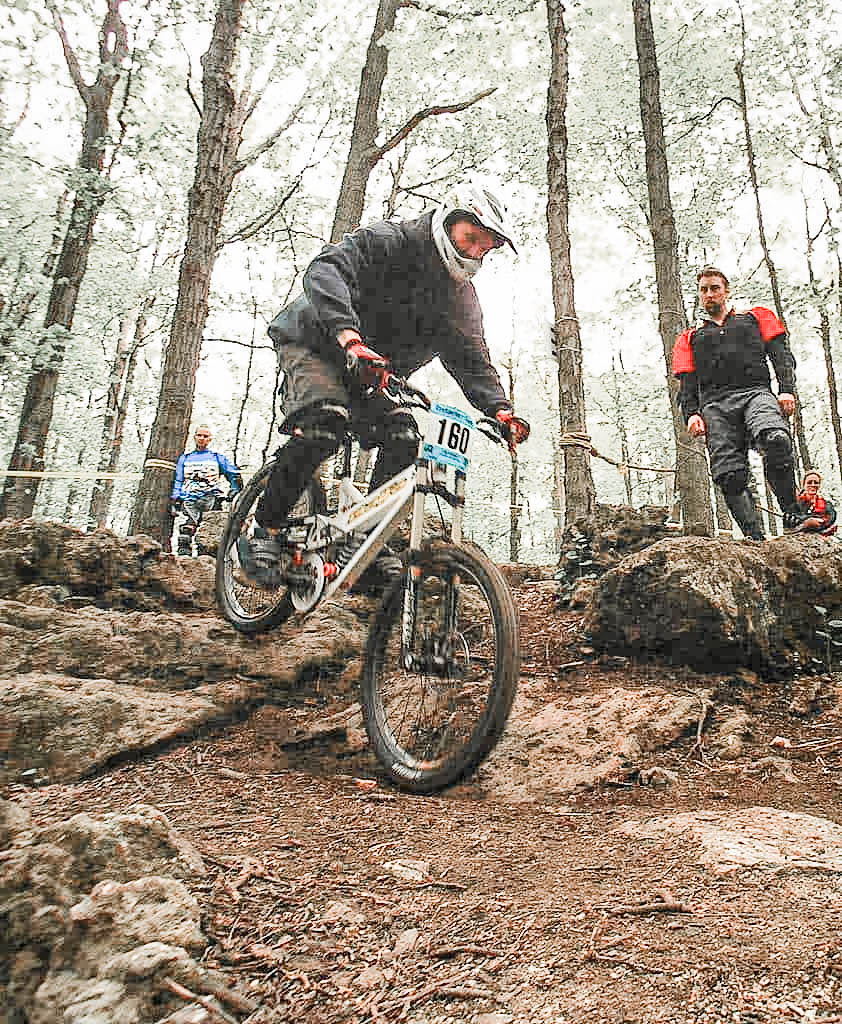
Tim is the founder of SimpleMTB and has been mountain biking for decades. He raced in the Ontario Cup series during his teenage years and riding continues to be one of his favorite hobbies now as an adult.
